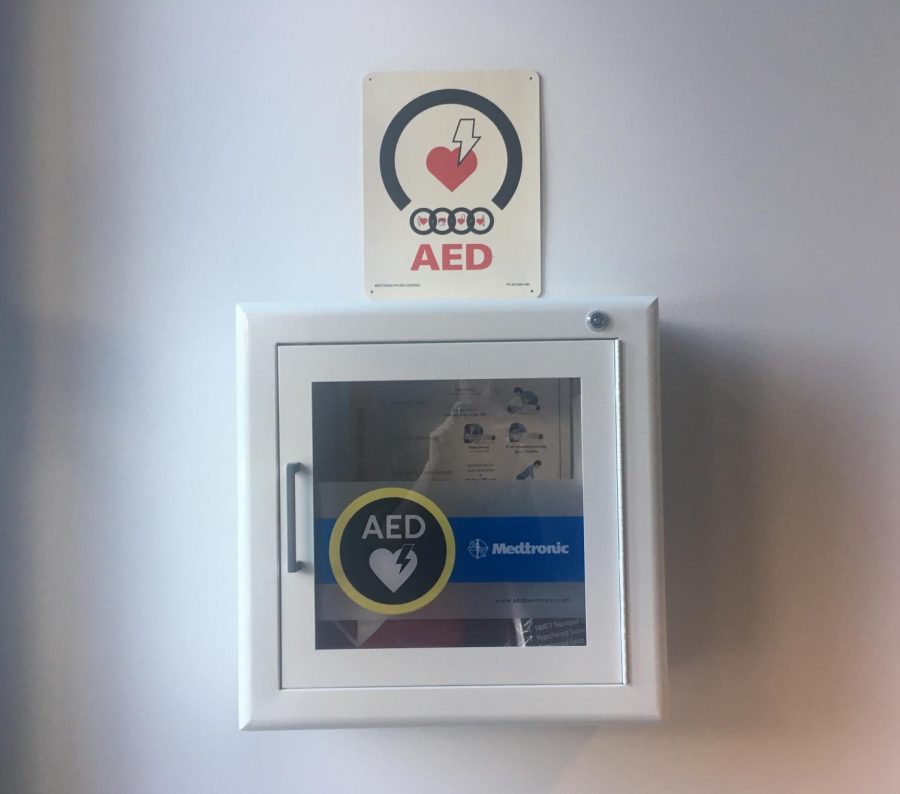Safety Committee meeting reviews AED needs and concerns at the college
An AED kit located in the Advanced Technology building. Photo was taken on Nov. 7 2018. (Emma Hall/The Inquirer).
November 7, 2018
The Diablo Valley Safety Committee held their first of two monthly meetings this past Monday to discuss a range of issues, from the usage and placement of automated external defibrillators, AED, in buildings lacking the devices, to progress on the recent implementation of the new safety monitor program. Both topics drew discussion from co-chair and Dean of Applied and Fine arts Toni Fannin and committee member Lt. Ryan Huddleston.
Huddleston said the first AED training went smoothly, but district police chief Ed Carney brought up the fact that the AED’s “only speak English,” producing an obstacle for non English speaking students in case of emergencies. A possible solution was then provided by Fannin in the form of bilingual AED instructional posters, which hasn’t been implemented across campus as it still requires President Lambs stamp of approval.
Though the safety monitors have been requesting more AEDs, Huddleston says that there’s only been one instance of the devices ever being used on campus. This which prompted Huddleston to ask the committee to set expectations of where AED’s need to be. Concern arose when discussing the degrees of how many AEDs were to be placed around campus.
“There are places on campus that do require AEDs, like the library and athletics,” said Fannin. “If we go too far, we could have one in every building, hall, and the school won’t pay for that.”
In regards to the safety monitor program, Fannin said that current monitors have been given placards to be placed outside their office or at their desk. As was reaffirmed by safety committee member and director of Marketing and Communications Chrisanne Knox said that “The safety monitors are regular people that have regular jobs on campus.”
One general problem the committee confronted was a campus shortage of first-aid kits due to a lack of funding. Even though the committee acknowledged the need for each building to have a first aid kit with basic but essential medical supplies, as of right now the buildings source their own kit. Huddleston also said that the committee needs to let students know where they can find kits, as the police station has multiple individuals a week just to get access to adhesive strips, saying “Band-Aids are not criminal acts.”
The meeting ended with Fannin emphasizing a need for students to perceive the concept of safety in a broader sense than simply the police presence on campus. The committee doesn’t have a responsibility to watch out for criminal behavior or activity, their objective covers conventional safety concerns, such as training for fires, earthquakes or spreading information on first-aid kit placement.
“We need to shift the narrative, it’s been my point of view, safety is much larger than the police presence. You heard Lt. Huddleston say today ‘you don’t call our office for a Band-Aid’, and you don’t. The police are there for criminal activity,” said Fannin.









































































